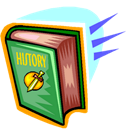Archive for the ‘Uncategorized’ Category
Benjamin Dunbar of Halifax, MA
 The Dunbar family in Massachusetts was my ancestral line. The last head of my family to live there was Benjamin E. Dunbar (1776-1831). I have documented his adult life, and now I want to know more about his birth family.
The Dunbar family in Massachusetts was my ancestral line. The last head of my family to live there was Benjamin E. Dunbar (1776-1831). I have documented his adult life, and now I want to know more about his birth family.
Ann Theopold Chaplin, in The Descendants of Robert Dunbar of Hingham, Massachusetts (1992), gives us the bare outline. His father, also named Benjamin, was born in 1749, and he died before 1779. His son and namesake Benjamin probably had no memory of him. There was one other child, a younger brother named Hosea. The mother was named Hannah. This family lived at Halifax.
I have learned that Hosea eventually moved to Vermont where he married Rachel White. They settled first in upstate New York and then went on to Lenawee County, Michigan.
In the meantime, my ancestor Benjamin E. Dunbar had gone to Cape Cod where he married Rhoda Hall and set up a saltworks. Shortly before he died, he moved his family to Summit County, Ohio. His widow and three of his daughters (Susannah Cutting, Olive Riddle, and Laura Fuller) later settled three counties away from Hosea’s family in St. Joseph County, Michigan.
None of this sheds any light on the life of the senior Benjamin Dunbar of Halifax.
Chaplin’s book tells us that he was married twice, and Hannah was the second wife. The first was Ruth Pratt whom he married 4 March 1772 at Halifax. I decided to begin my quest for details about Benjamin Dunbar by searching for information about her.
This week I was unable to identify her in any other Massachusetts records although an online search turned up four possibilities:
- Ruth Pratt born 24 November 1740 at Bridgewater to David and Ann Pratt. This Ruth probably was the same Ruth who married Obadiah Bates on 27 May 1762 at Bridgewater.
- Ruth Pratt born 13 May 1742 at Middleboro to Phineas and Sarah Pratt. This Ruth married John Rickard on 24 May 1764.
- Ruth Prat born 1 October 1745 at Plymouth to William Prat and Mary Young. The family tree posted on Ancestry.com for this family says they relocated to North Carolina while Ruth was still a child.
- Ruth Pratt b. 1752 at East Bridgewater, d. Dec. 1775 at Halifax. Several family trees on Ancestry claim this is the woman who married Benjamin E. Dunbar, but none provide any sources. Still, these dates are new information not provided in Chaplin’s book, and this Ruth matches the person I seek.
I think I can rule out the first three women as the wife of my Benjamin. Perhaps I can find some corroborating evidence in the Bridgewater and Halifax records showing that Ruth #4 was Benjamin’s first wife. I do not want to take the word of an unsourced, online family tree.
Finding information about women, particularly during Colonial times, presents a challenge. I may not be able to find anything more about Ruth Pratt. Yet a thorough research on Benjamin requires that I look at all the people in his life.
Hosea Dunbar, a FAN of Benjamin E. Dunbar
 Hosea Dunbar (1777-1849) was my ancestor Benjamin E. Dunbar’s younger brother. I have been filling out a Family Group Sheet for Hosea in the hopes of learning more about the greater Dunbar family. Good genealogical research practices tell us to search for members of an ancestor’s FAN club, meaning their family, associates, and neighbors.
Hosea Dunbar (1777-1849) was my ancestor Benjamin E. Dunbar’s younger brother. I have been filling out a Family Group Sheet for Hosea in the hopes of learning more about the greater Dunbar family. Good genealogical research practices tell us to search for members of an ancestor’s FAN club, meaning their family, associates, and neighbors.
Our Dunbar family history, Robert Dunbar of Hingham, Massachusetts by Ann Theopold Chaplin (1992), gave me some of Hosea’s basic information, but it is incomplete and somewhat inaccurate. This genealogy told me that Hosea’s family migrated from Vermont to New York and then on to Michigan.
FindAGrave.com provides the death information for Hosea, his wife Rachel, and all but one of their children. It also names the children’s spouses.
More can be done on this family. Hosea was married in Vermont and some of the children were born there. I should be able to find a Vermont marriage record and birth registrations for them.
I may also be able to locate marriage records for any children married in Michigan, although the older ones may have married in New York. I have heard that New York research is difficult, so that may be a dead end.
The family eventually settled in Lenawee County, Michigan, arriving by 1840. There ought to be a county history, and perhaps the Dunbars are mentioned therein. If I am lucky, I can find one online.
All this means that I have more to do on Hosea’s family before I move on to other Dunbar family members and associates. My research subject for this year is my own ancestor, Benjamin E. Dunbar (1776-1831). To fully understand his life, I must first finish learning about his FAN Hosea.
Changing Focus from Ohio to Massachusetts
 Back in December I set the goal of documenting the lives of my ancestral couple Benjamin E. Dunbar (1776-1831) and Rhoda Hall (1784-1850). These people began their married life on Cape Cod, and they relocated to Stow, Ohio shortly before Benjamin’s death.
Back in December I set the goal of documenting the lives of my ancestral couple Benjamin E. Dunbar (1776-1831) and Rhoda Hall (1784-1850). These people began their married life on Cape Cod, and they relocated to Stow, Ohio shortly before Benjamin’s death.
I have spent my research time so far this year learning about their twelve children. Although I have gathered a lot of information about most of them, nothing sheds much light on the lives of the parents.
This is not a problem in Rhoda’s case. I already know quite a bit about her. She was a Mayflower descendant, and I used her lineage to gain membership into the General Society of Mayflower Descendants.
Now I need to look more closely at Benjamin’s life. I begin with a couple of questions:
- When he was a young man, Benjamin purchased Chatham, MA land from Fear Dunbar Ryder. Since all the Massachusetts Dunbars descended from the immigrant Robert Dunbar of Hingham, MA (1630-1693), Benjamin and Fear must have been related. What was the relationship?
- Who was Benjamin’s mother? Online trees claim she was Hannah Latham. If that is true, this may be another Mayflower line for us, and we would also have a common ancestor with Princess Diana. On the other hand, the heavily researched The Descendants of
Robert Dunbar of Hingham, Massachusetts
(1630-1693) by Ann Theopold Chaplin (1992) claims that Benjamin’s mother was Hannah Hathaway.
Research for the post-Revolution generation presents challenges. U. S. census records do not name everyone in the household until 1850. Many New England family names were repeated from generation to generation, and it is difficult to sort people out. In the case of Benjamin and Rhoda, the Barnstable County, MA courthouse experienced a catastrophic fire in 1827 that destroyed the land records.
Over the years, whenever I ran across a record pertaining to Chatham or the Dunbars, I would take a copy and file it away for future use. I am eager to make my way through this deep pile of resources to see what I can find about Benjamin Dunbar and his parents. After I see what I have already collected, I can determine where I need to look next.
New Year, New Project
 A new year will arrive in a few hours. With it will come the time for me to begin a new genealogy research project.
A new year will arrive in a few hours. With it will come the time for me to begin a new genealogy research project.
Each year I target an ancestor to learn more about. At the end of the year, I send my findings around to my extended family. Maybe someone will preserve what I have learned for their own descendants.
In 2021 I will try to find more information on my third great-grandfather, Benjamin E. Dunbar. He was a salt maker on Cape Cod for many years.
Benjamin is listed in the Dunbar family genealogy, The Descendants of Robert Dunbar of Hingham, Massachusetts by Ann Theopold Chaplin.
From this and other sources, I have already collected enough documentation relating to his life to create a short timeline:
1776 Born in Halifax, Massachusetts
1805 Married Rhoda Hall at Chatham, Massachusetts
1814 Served in the War of 1812 as a private in the Massachusetts militia in the defense of Eastham
1831 Died at Stow, Ohio
Benjamin Dunbar was just 55 when he died. He had recently sold his saltworks and relocated to Ohio. He left a widow and twelve children.
I have a few questions about his life that I would like to answer this year:
- Who was his mother? The Dunbar book says she was Hannah Hathaway, but online sources claim a different Hannah was his mother.
- Who were his siblings? The Dunbar book says he had a younger brother, Hosea Dunbar. Their father died when the boys were toddlers. Did Hannah re-marry? Did Benjamin have half-siblings?
- Did he leave any male line descendants? He had three sons, Daniel H., Benjamin S., and Moses. I have found no records on Daniel or Moses after 1843 when the Dunbar land in Ohio was partitioned. Benjamin S. lived until at least 1880 and is buried in an unmarked grave near his parents in Stow, but I know little about his life.
- Has anyone discovered Benjamin’s Dunbar roots in Scotland? When the Dunbar book was written in 1992, no birth family had been found for the patriarch Robert although family tradition claimed he was born in the 1630’s in Morayshire. Dunbar researchers at the time concluded that Robert had been taken prisoner at the Battle of Dunbar (1650) or the Battle of Worcestor (1651) and deported to the colonies. Is there any more recent scholarship on this man?
After a year of studying my Snow family in New England, I am ready to turn the page and look at a new family. I can apply much of what I learned in 2020 about New England research to this new project.
The Dunbars should provide an interesting subject. After all, my distant cousin the philosopher Henry David Thoreau belonged to this family. His mother was Cynthia Dunbar.
I Take My Turn Offering a Norwegian Genealogy Class
 Last weekend I led a discussion for our Sons of Norway genealogy study group. Earlier this year, we had a planning meeting to schedule topics for the months ahead, and I drew April. This approach frees up our leader, my own husband/tech advisor, to work on other things. No one must do too much if we each take responsibility for an occasional program.
Last weekend I led a discussion for our Sons of Norway genealogy study group. Earlier this year, we had a planning meeting to schedule topics for the months ahead, and I drew April. This approach frees up our leader, my own husband/tech advisor, to work on other things. No one must do too much if we each take responsibility for an occasional program.
My topic was organizing genealogical research. I am no expert at this, as you would see if you peeked into my office. I thought about it awhile, and I realized I could not do a formal presentation on this subject. I have no expertise to offer.
Instead, I decided to lead a discussion where all participants could share what they know. We could learn from one another and take away any good tips offered.
I did some background research and located a couple of books on organizing your genealogy research. From these, I prepared an outline to guide the discussion. I made copies to distribute to everyone who attended.
I was pleasantly surprised when ten people gathered for our meeting. This is more than we have had in a long time. We even had a couple of visitors.
We had a lively discussion with most people confessing that their records could use better organization. We were all reassured to learn that no best way to organize exists. Systems used by the group members included paper systems in file folders and notebooks, spreadsheets, and digitized records. Most everyone uses a genealogy software program to keep track of family groups. We talked about the pros and cons of each system for filing documents and maintaining research calendars.
I circulated the reference books and copies of some paper organizational helps like family group sheets and research logs. I also showed the notebook I keep on my Norwegian ancestors and explained how I have it organized.
The best tip I gleaned from this meeting was that I do not have to take the time to reorganize everything I have collected. If I want a new system, say a digital one, I can begin with materials I am using for my research today. Once I identify a consistent file-naming system, I can then go back and scan older items as I refer to them. Eventually, it will all get done without me trying to do it all at once.
I think we had a very successful genealogy session. Several people in the group had requested this topic, and the discussion format seemed well-received. A wise genealogist told me once that if you offer a good program, they will come.
In case anyone is interested, we looked at these books on genealogy organization, both available at my local library:
- Smith, Drew. Organize Your Genealogy: Strategies and Solutions for Every Researcher
- Scott, Kerry. How to Use Evernote for Genealogy: A Step-By-Step Guide to Organize your Research and Boost your Genealogy Productivity
DNA Test Results Arrive
 Several months ago, I resolved to take a DNA test for genealogical purposes. I purchased both an autosomal test and a mitochondrial test from Family Tree DNA. After performing the cheek swabs and mailing in the samples, I received my results earlier this summer.
Several months ago, I resolved to take a DNA test for genealogical purposes. I purchased both an autosomal test and a mitochondrial test from Family Tree DNA. After performing the cheek swabs and mailing in the samples, I received my results earlier this summer.
Since then, I have spent a bit of time reviewing my report. My ethnicity results varied some from what I expected:
What I Thought What the Test Said
44% English and Scots Irish 38% British Isles
25% Finnish 30% Finland
25% Norwegian 21% Scandinavia
6% German 9% Iberia
—- 2% East Europe
What am I to make of this? It seems my maternal line matches pretty well with the heritage I anticipated. My mom was half Norwegian, half Finn, and 51% of my ethnic origin lies in Scandinavia and Finland.
The disparity appears to come from my dad’s side. The family said he was primarily English and Scots Irish with the exception of a German great-grandmother. My heritage shows plenty of British but no German on this test. Surprisingly, I do have a sizable connection to Iberia (Spain and Portugal). I also have a bit of eastern European that the FamilyTreeDNA map shows centered in eastern Poland and western Ukraine.
Where would I get Iberian and eastern European ancestors when my family does not know of any? Could some of it be Germans from Russia? Black Irish?
My dad does have an unidentified grandfather who would have contributed, on average, 12.5% of my DNA. Perhaps all or part of this 11% Iberian and Eastern European comes from him. I wish I could find a DNA match that would help me explain this part of my heritage.
Unfortunately, nearly all my closest matches on Family Tree DNA are Finnish, so they must be my mother’s relatives. So far, no one leaps out of the list as a good prospect for deciphering my mystery lines on my father’s side.
I plan to keep working to understand the DNA data and to contact matches that might help me. As more people submit test results, perhaps a closer match will become available for comparison. In the meantime, I am participating in a DNA class through the Colorado Genealogical Society, and I am reading a couple of books on DNA testing. When that DNA match arrives someday, I want to be able to recognize and interpret it.
Sherman Serendipity
 I happened upon a treasure the other day. While contemplating the next step in my Sherman family research, for some reason I looked into a desk drawer that I had not opened in a while. There I found a folder marked “Sherman.” I had forgotten all about it.
I happened upon a treasure the other day. While contemplating the next step in my Sherman family research, for some reason I looked into a desk drawer that I had not opened in a while. There I found a folder marked “Sherman.” I had forgotten all about it.
It contained several Sherman-related documents I have collected over the years. I had tossed them in the folder awaiting a time when I could focus on the Shermans. Surprisingly, some of the papers were documents I had just been considering seeking as a next step in my research. What a find! (not to mention the opportunity to clean out something from the desk drawer).
First I turned my attention to a Civil War Widow’s pension file. It pertains to my ancestor Thomas Sherman’s brother-in-law, John Alvey. I learned the following from this file:
- Private John Alvey’s widow Evaline (Thomas’ older sister) filed for a pension in 1867, and she began receiving $8 per month. The pension continued until her death in 1922—a period of 55 years.
- The discrepancy on the 1851 Alvey marriage record between her name Evaline Sherman and the recorded name Emeline Shearer was explained as an Estill County, KY scrivener’s error.
- Pvt. John Alvey enlisted as a Union volunteer in August, 1862 at Hendersonville, KY. He served in the 8th Kentucky cavalry.
- Pvt. John Alvey died of diphtheria in January 1863 in a hospital at Hopkinsville, Kentucky.
- When Evaline filed for the pension, both she and two sisters who served as witnesses (Elizabeth Sherman Glover and Gilla Sherman Cobb) had moved from Kentucky to Williamsburgh, Indiana.
- Evaline and John Alvey’s only child, Roena, was born December 25, 1852.
Finding this Sherman folder just when I needed it becomes another example of that genealogy serendipity I experience every so often. Other genealogists talk about it, too. It is almost as if our ancestors want to be found, and they nudge us in the right direction. I cannot wait to see what else I find in this long-forgotten folder.
Find A Mug Book
 Genealogists doing research on people who lived in the nineteenth century need to look for a mug book.
Genealogists doing research on people who lived in the nineteenth century need to look for a mug book.
By “mug book”, I do not mean the collection of photos of criminals kept by the police. I mean the kind of books put together by towns and counties in the late 1800’s to preserve the history of their pioneer days. Genealogists call these publications mug books.
These books offer a gold mine to the genealogist. They include information on families that settled in the locality, the history of the area, and descriptions of the local geography. Often they include valuable lists, too, like names of those who served in the Civil War, or names of all the pastors of the local churches.
This week I have spent time reviewing a couple of county histories from Coles County, Illinois. My Carter, Reed, Kirkham, and Templeton ancestors settled in Coles County when the area first opened for settlement about 1829. The county histories, or mug books, date from 1879 and 1905. The children of the original settlers were still living then, and they may well have contributed information to these books. From these, I gleaned family information that otherwise was lost.
I learned that John Carter was from Kentucky. He worked occasionally as a blacksmith but did not follow it as a regular business. He gave it up for other pursuits when another man set up shop. Forty years later, John’s daughter and her husband continued to live on the same land where John built his first cabin.
I learned that Caleb Reed was a charter member of the Freemason Lodge in 1863, and he served as Junior Warden. His father Thomas, a pioneer settler, came from Kentucky, too.
One of the books, the 1879 History of Coles County, includes wonderful anecdotes of pioneer life. Unfortunately, the writer attached no names to the stories.
For example, the book tells of a local minister’s preaching tour where he stopped in to visit various settlers and to share a meal. At one backwoods cabin he found the parents relaxing by the fire and smoking cob-pipes. The daughter was cooking a meal of stewed coon and buckwheat batter. The book goes on to relate that “A portion of the hem of some of her undergarments had been torn from its native place and was dangling within an inch or two of the floor, and as she would move about the fire, it would now and then draggle in the frying batter…When dinner was announced a little later, he could eat but a few mouthfuls.”
Was this my family? I will never know, but stories like these give us a great picture of the everyday lives of our ancestors. When doing research in the 1800’s time frame, especially in the Midwest, is usually pays off to consult a mug book.
A Handy Tool for Genealogists
 One of my favorite things to do as a genealogist is to look at cemetery markers and death records. If I am lucky, I will find birth and death dates for the deceased here. Yet sometimes, especially in earlier records, I find the birth date omitted. The death record may give only the death date coupled with the age of the deceased.
One of my favorite things to do as a genealogist is to look at cemetery markers and death records. If I am lucky, I will find birth and death dates for the deceased here. Yet sometimes, especially in earlier records, I find the birth date omitted. The death record may give only the death date coupled with the age of the deceased.
I encountered this recently when I studied the church burial record for my Finnish ancestor Anders Abelsson Mattila. He had died on the 27th of April, 1882 at the age of 55 years, 5 months, and 23 days. The record did not provide a birth date for him.
In my early days of genealogy, I would have had to pursue a complicated formula to derive his birth date from the information on this record. No more. Now I can use a simple utility found on Search For Ancestors at http://www.searchforancestors.com/utility/birthday.html to calculate this date. The Tombstone Birthday Calculator on this site allows me to plug in the death date and age information, and then it calculates the birth date for me.
Using this tool, I learned that Anders was born 4 November 1826. This information exactly matches the date given on all his subsequent records. The quick answer I received from the online calculator gave me another rewarding experience analyzing a death record. You can bet I have this Calculator bookmarked as part of my genealogical tool kit.
Locating A Medieval German Family Using Google Books
Recently my husband/tech advisor made an exciting find. Unfortunately, it was in German. Fortunately, modern technology offered a simple way to translate the information into English. Here is his story:
Isn’t modern research wonderful . . .
This morning I had 15 minutes. I was researching an ancient possible ancestor – Tietze Von Rashke, born about 1450 in Germany (yes, I know – not relevant). Google Search only turned up one find:
I went there, and sure enough, there was a page of a book printed in 1845 that Google had scanned – in old German:

That sure looks like my name, but the search engine would only show that one page – and it looks like it goes on. And, of course, I can’t read it.
 Enter the wonderful technology. Of course, it already helped me find this, but WOW.
Enter the wonderful technology. Of course, it already helped me find this, but WOW.
On the left side, it said this was an eBook and it was free. I clicked on the red button and Google Play came up and I logged in and “bought” my free book.
Of course I clicked read. And I knew I needed page 72, so scrolled right to it.
But it was in German – old German – and I don’t read it. The book information had said that this was a scanned book and was stored as a set of pictures, so you couldn’t scroll like a regular book.
But – they had highlighted the name and found it, so I wondered.
I attempted to “select the paragraph I wanted – and WOW – technology magic exists! Here’s what happened:
When I clicked on Translate, here’s what I got:
After working through the next couple of pages, I found confirmation – and new relatives – of four generations of descendants from Tietze Von Raschke as the book proceeded to describe how the land had been passed to the current – in 1845 – owners.
Boy, I sure couldn’t have ever done anything like this in a morning 5 years ago!